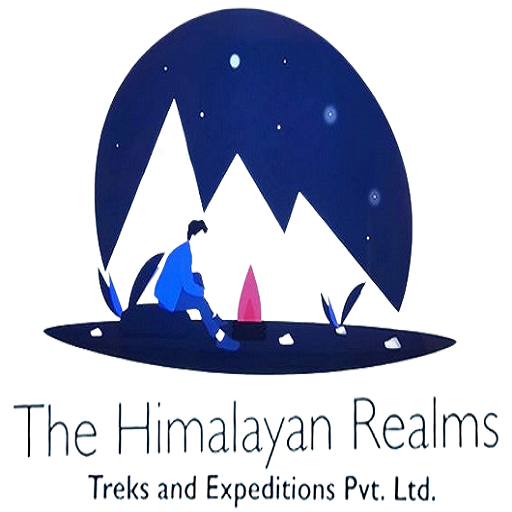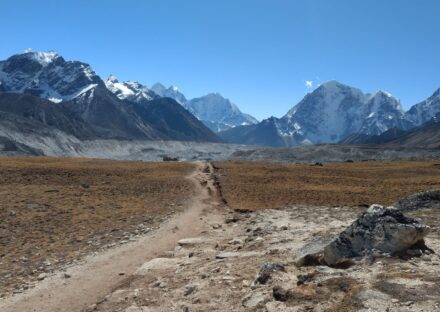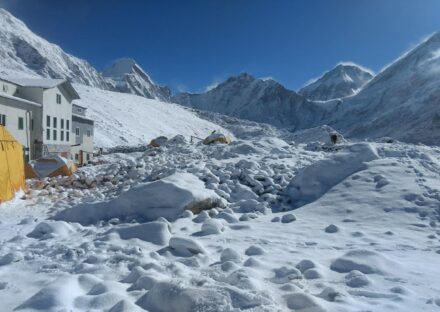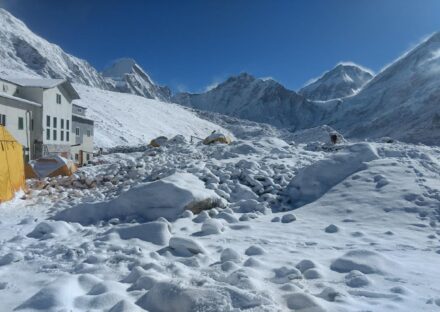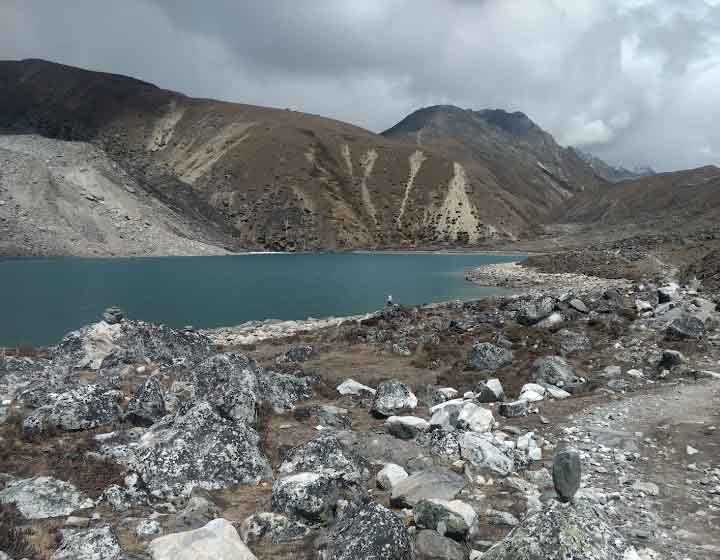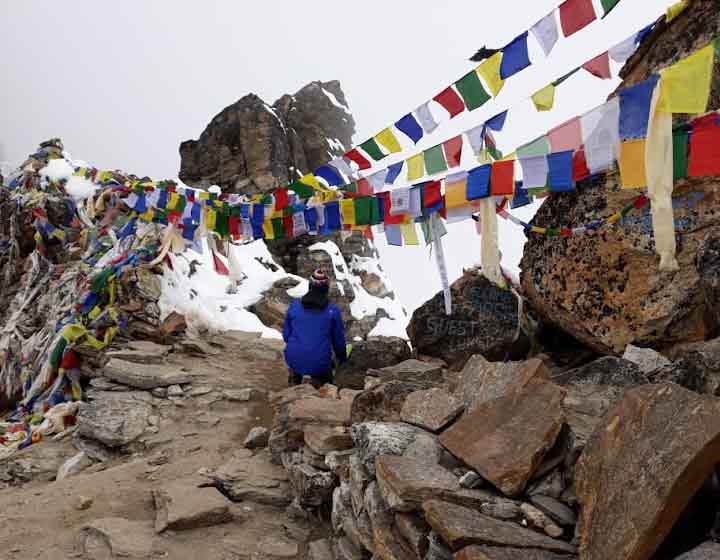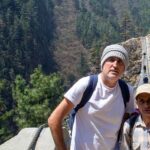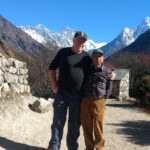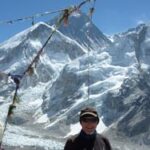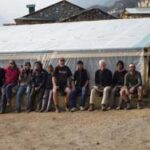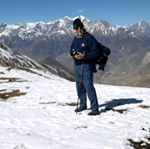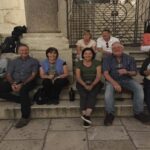The “Lobas” are known as the people of Upper Mustang, primarily of Tibetan origin. Their lifestyle has been deeply rooted in Tibetan Buddhism and traditional practices
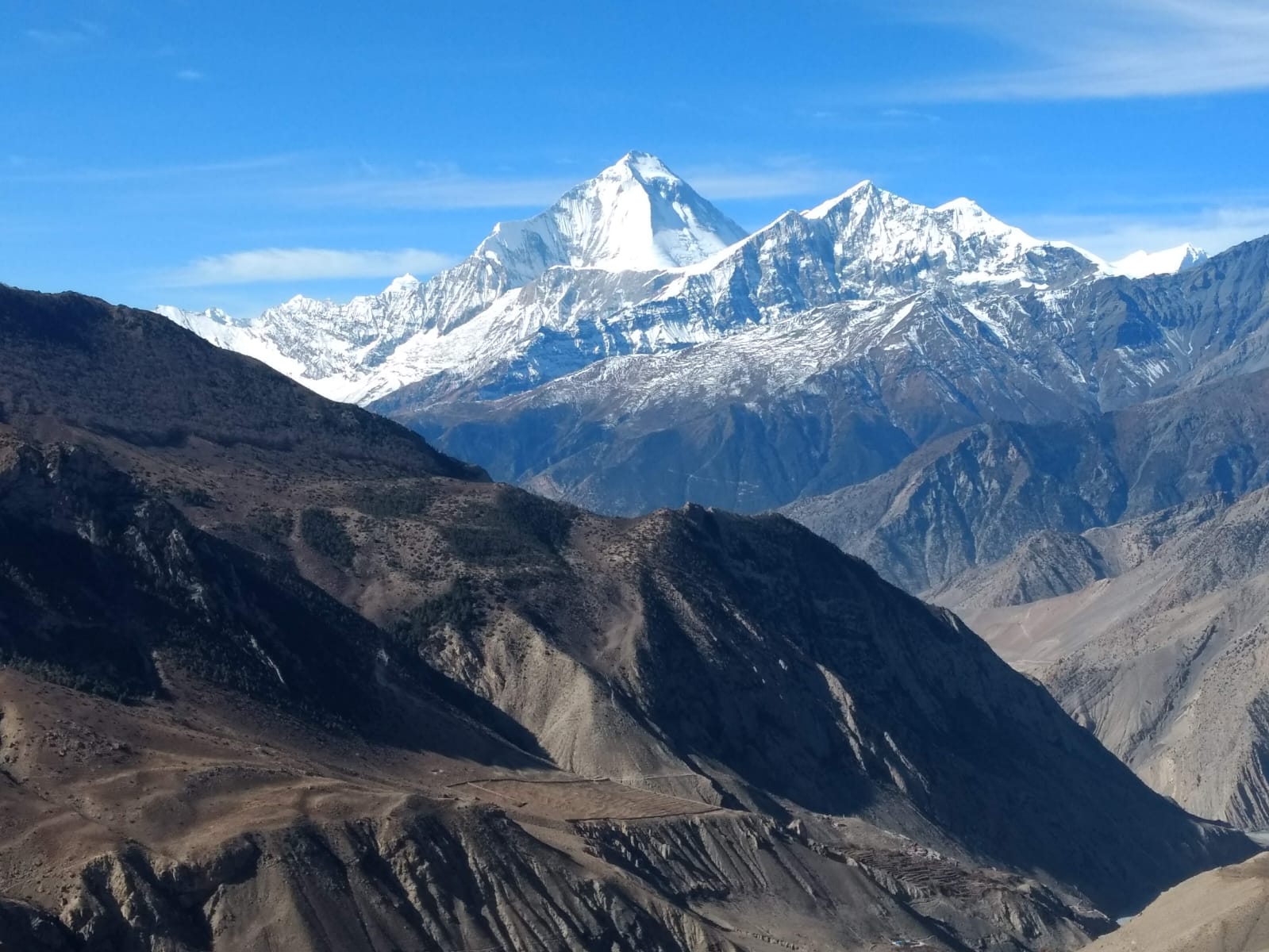
Trip Duration
14 Days
Trip Grade
Modorade
Transportation
Flight, car, jeep, private bus
Max. Altitude
4,890m (16,040 ft)
Departure From
Kathmandlu
Destination
Nepal
Meals
Breakfast,Lunch, Dinner and tea/coffee
Accomodation
Hotel
Season
September to December and March to May
Trip overview
Over views: Upper Mustang Lo manghang 15-day trek
Upper Mustang Trek is the most popular area in Nepal. The Home Ministry of Nepal announced the opening of the restricted areas in October 1991. There is also strict control in obtaining a special permit from the Department of Immigration to protect their traditions from outside influence as well as to protect their environment. The region of Tibetan influence on Kaligandaki, from the Tibetan border south to Kaligandaki, is generally referred to as “Lo-Manthang.”
Upper Mustang trekking area is a sensational journey beyond the Himalayas to one of the most remote kingdoms on earth. Hidden behind the Himalayan giants of Dhaulagiri and Annapurna is truly the Forbidden Kingdom. Once the Upper Mustang was an independent kingdom, this land of Tibetan Buddhism was only opened to outsiders in 1992. With its ancient monasteries, palaces, caves, and ruins of old forts, Mustang is rich in art and history. This is perhaps the only region where Tibetan culture and religion have survived over the centuries, mostly untouched by time and modern colonization. This trek follows the ancient trade route, passing through historic towns and eventually ending at the capital city of Lo Manthang. Region and requires a permit fee of US$ 500 per person for 10 days.
People & Lifestyle
Occupation: Agriculture and animal husbandry (yaks, sheep, and goats) are the primary means of livelihood. Housing: Traditional mud-brick houses with flat roofs, often painted white and red, reflecting Tibetan architecture. Clothing: Men wear long woolen robes (chubas), while women wear colorful aprons over their dresses.
Religion & Monasteries
Tibetan Buddhism is the dominant religion in Upper Mustang. Many ancient monasteries (gompas), chortens, and prayer wheels reflect the deep spiritual connection of the locals.
Famous Monasteries:
Thubchen Monastery (Lo Manthang) is a 15th-century monastery with vibrant murals. Jampa Monastery (Lo Manthang)—the oldest monastery, dedicated to Maitreya Buddha. Ghar Gompa: An 8th-century monastery, associated with Guru Rinpoche.
Festivals
Upper Mustang is known for its vibrant and sacred festivals:
Tiji Festival (May): A three-day masked dance festival symbolizing the victory of good over evil. It attracts monks, locals, and international visitors. Losar (Tibetan New Year, February-March): Celebrated with prayers, feasts, and traditional dances. Saga Dawa: A religious festival honoring the birth, enlightenment, and death of Buddha.
Popular Places to Visit
Lo Manthang—the walled city with royal palaces, monasteries, and ancient culture. Chhoser Caves: Mysterious sky caves used for meditation and ancient burials.
Damodar Kunda—Sacred Lake in Upper Mustang
Damodar Kunda is a sacred lake located in the remote Upper Mustang region of Nepal, at an altitude of 4,890 meters. Furthermore, the site’s spiritual significance is enhanced by its association with ancient myths and religious practices. In addition, many devotees undertake arduous journeys to pay homage at the sacred temples and monasteries in the region. Consequently, the presence of the revered Shaligram stones attracts pilgrims and scholars alike, deepening the cultural and religious appeal of this sacred destination.
Religious Significance
Hinduism: According to the Puranas (Hindu scriptures), Lord Krishna declared that bathing in Damodar Kunda would cleanse one of all sins. Many Hindu pilgrims visit the lake for purification rituals.
Buddhism: Tibetan Buddhists consider it a holy site, as it lies near several ancient monasteries and sacred caves. Shaligram Fossils: These are found in and around the lake and are worshipped as a representation of Lord Vishnu.
How to Visit Damodar Kunda?
The Damodar Kunda trekking is A challenging high-altitude trek (10–14 days from Jomsom). Helicopter Tour: Quick access for pilgrims and travelers with limited time.
Beautiful place
Ghar Gompa, one of Nepal’s oldest monasteries linked to Guru Rinpoche, stands near Kagbeni, a historic village at the gateway to Upper Mustang.Dhakmar is a scenic village famous for its red cliffs. Damodar Kunda-Holi Lake in the upper Mustang area. Muktinath Temple: A sacred pilgrimage site for both Hindus and Buddhists.
Atmosphere & Landscape
Climate: semi-arid (similar to Tibet), with little rainfall due to the rain shadow effect. Scenery: barren landscapes, deep gorges, colorful cliffs, and dramatic rock formations. Altitude: Ranges from 2,800 m to 4,200 m. Best Time to Visit: March to November (avoiding the coldest winter months).
Scenery & Climate-Landscape: Surrounded by rugged mountains, barren hills, and breathtaking Himalayan views.
Climate: Spring & Autumn (Best time to visit) – Clear skies, moderate weather. Winter (December-February): Extremely cold; snowfall makes it inaccessible. Monsoon (July-August): dry due to Mustang’s rain shadow, but can be windy.
Annapurna Region Side Routes:
Ghorepani Poon Hill Trek: A popular side route for Annapurna, this trek offers stunning views of the Annapurna and Dhaulagiri mountain ranges. It’s a short, accessible trek, perfect for those with limited time.
The Annapurna Base Camp (ABC) trek is commonly started from Nayapul, but an alternative route through Ghandruk, a traditional Gurung village, offers a more cultural and scenic experience.
Jomsom to Muktinath: While Jomsom is a popular starting point for Upper Mustang, trekking from Jomsom to Muktinath is a great side route that can be combined with other Annapurna treks.
Annapurna Circuit—Lower Route: The traditional Annapurna Circuit is often done through the Thorong La Pass, but a side route starting from Pokhara and taking a lower route can be a quieter and more relaxed option for those interested in a less strenuous trek.
Upper Mustang Side Routes:
Lo Manthang to Chhoser: A lesser-known route connecting the walled city of Lo Manthang to the village of Chhoser. It offers a deeper exploration of Mustang’s culture and isolated monasteries.
Tiji Festival Trek: For trekkers interested in cultural events, trekking in Upper Mustang during the Tiji Festival is a great side route. This trek coincides with the festival held in Lo Manthang and gives a deep insight into the region’s unique traditions.
Dhakmar to Ghemi: A side trek that passes through the beautiful and remote village of Dhakmar, which is known for its red cliffs and Tibetan architecture. Continuing to Ghemi takes you through a less-traveled path.
Luri Monastery Trek: This trek involves hiking from Lo Manthang to the Luri Monastery, situated in a cave on the side of a cliff. It’s an exceptional spiritual and cultural journey.
If you’re looking for a similar 15-day trekking route to Upper Mustang, here are a few options with similar landscapes, cultural experiences, and adventure levels:
1. Nar Phu Valley Trek (15 Days)
Why Similar? Nar Phu Valley offers a restricted area trek with Tibetan-influenced villages, arid landscapes, and dramatic canyons, much like Upper Mustang.
Route Highlights: Kathmandu → Besisahar → Koto → Meta → Phu Gaon → Nar Phedi → Nar Gaon → Kang La Pass (5,240m) → Ngawal → Manang → Pisang → Besisahar → Kathmandu
Best For: Those looking for an off-the-beaten-path adventure with a mix of Tibetan culture and high-altitude passes.
2. Dolpo Circuit Trek (15 Days)
Why Similar? Dolpo is another restricted area with similar dry, barren landscapes and traditional Tibetan culture.
Route Highlights: Kathmandu → Nepalgunj → Juphal → Dunai → Tarakot → Dho Tarap → Numa La Pass (5,318m) → Shey Gompa → Saldang → Juphal → Nepalgunj → Kathmandu Best For: Those seeking a remote trek with rugged beauty, Buddhist monasteries, and less tourist traffic.
3. Tsum Valley Trek (15 Days)
Why Similar? Tsum Valley offers a restricted area experience with Tibetan Buddhist culture, ancient monasteries, and dramatic landscapes.
Route Highlights: Kathmandu → Arughat → Machha Khola → Jagat → Lokpa → Chhokang Paro → Nile → Mu Gompa → Rachen Gompa → Chumling → Philim → Soti Khola → KathmanduBest For: Those interested in sacred Buddhist culture, ancient monasteries, and remote valley trekking.
4. Manaslu Circuit Trek (15 Days)
Why Similar? The trek takes you through remote villages with Tibetan culture, stunning Himalayan views, and high passes similar to Upper Mustang.
Route Highlights: Kathmandu → Soti Khola → Machha Khola → Jagat → Deng → Namrung → Samagaon → Samdo → Larkya La Pass (5,106m) → Dharapani → Kathmandu
Best For: Those looking for a challenging trek with high mountain scenery and a mix of cultural and wilderness experiences.
Annapurna Circuit with Tilicho Lake (15 Days)
Why Similar? Offers high-altitude desert-like landscapes, Tibetan Buddhist culture, and dramatic mountain views similar to Upper Mustang.
Route Highlights: Kathmandu → Besisahar → Chame → Pisang → Manang → Tilicho Lake (4,919m) → Yak Kharka → Thorong La Pass (5,416m) → Muktinath → Jomsom → Pokhara
Best For: Those who want a mix of high-altitude adventure, diverse landscapes, and cultural immersion.
Mardi Himal Trek with Khopra Ridge (15 Days)
Why Similar? Offers breathtaking views, traditional villages, and off-the-beaten-path trails with high-altitude ridges resembling Mustang’s landscapes.
Route Highlights: Pokhara → Australian Camp → Forest Camp → Mardi Himal Base Camp (4,500m) → Landruk → Tadapani → Khopra Ridge → Tatopani → Pokhara
Best For: Those seeking a moderately challenging trek with spectacular ridge walks and fewer crowds.
Jomsom – Muktinath Trek with Lo Manthang Exploration (15 Days)
Why Similar? Follows part of the Upper Mustang route and allows exploration of Mustang’s cultural heritage without a full Mustang permit.
Best For: Those who want to explore Mustang’s Tibetan culture, visit monasteries, and enjoy a scenic yet moderate trek.
Similarly, Himalayan Realms Treks offers a wide range of trekking routes in the Annapurna region, including both classic trails and off-the-beaten-path adventures. Moreover, these routes cater to trekkers of all skill levels, from beginners seeking a short and scenic trek to experienced hikers looking for a challenging expedition. In addition, the breathtaking landscapes, diverse cultural experiences, and well-established trekking infrastructure make the Annapurna region an ideal destination for adventurers. Below are some of them for your information.
Siklish Trek 9 days
Kathmandu Chitwan & Pokhara Tours 7/8 Days
Hotspring Tour: 9 days
Australian camp Tour Nepal for 6 days
Khayar Lake Trekking 17 days
Panchase Trekking 7 days
Kathmandu,Pokhara and Sarangkot Tour (6 days)
Annapura Base camp trek 10 days
Dhampus, Sarangkot Trek 8 days
Jomsom Muktinath Trek, 13 days
Annapurna circuit Trek, 12 days
Mardi Trek 6 days
Clonclusion Upper Mustang Trek
The Upper Mustang (Lo-Manthang) Trek takes you into the hidden kingdoms of Lo, offering a unique blend of Tibetan culture, ancient monasteries, and breathtaking desert-like landscapes. This journey provides an unparalleled opportunity to explore Nepal’s remote and mystical region, featuring the distinctive walled city of Lo Manthang, dramatic cliffs, and centuries-old cave dwellings.
From windswept valleys to the rich heritage of Tibetan Buddhism, this trek delivers both adventure and cultural immersion. Its restricted area status ensures fewer crowds, preserving the region’s traditions and pristine landscapes.
Whether you seek stunning Himalayan vistas, the fascinating history of the Mustang Kingdom, or the spiritual serenity of its monasteries, the Upper Mustang Trek promises an unforgettable experience, leaving you with lasting memories and a deep appreciation for Nepal’s hidden treasures.
Note:-
A special trekking permit ($500 per person for 10 days) is required for Upper Mustang.. Restricted area regulations apply, and trekkers must travel with a registered guide. who seeks an authentic experience. Moreover, its well-preserved monasteries, traditional mud-brick houses, and centuries-old murals provide a glimpse into a bygone era. In addition, the region’s restricted access has helped maintain its unique heritage, allowing visitors to witness Tibetan Buddhist traditions that have remained largely unchanged for generations. Consequently, Lo Manthang continues to captivate travelers, historians, and spiritual seekers alike.
Short Itinerary
Day 01: Arrival Kathmandu
Day 02: Katmandu—Pokhara.
day 03: Pokhara-Jomsom-Kagbeni
Day 04: Kagbeni-Chaile
Day 05: Chaile-Ghileing
Day 06: Gheling - Charang
Day 07: Charang - Lo-Manthang
Day 08: Lo-Manthang
Day 09: Lo-manthang
Day 10: Lo-Manthang-Ghami
Day 11: Gami-Samar
Day 12: Samar-Kagbeni
Day 13: Kagbeni–Jomsom
Day 14: Jomsom-Pokhara
Day 15: Pokhara-Kathmandu
Itinerary
Arrival in Kathmandu Tribhuban international ariport (1,300m/4,264ft): then pick you up and take a short drive from the airport to the hotel check in the hotel and rest for few hrs then we meet again with guide and barging about the trek what we need the equipment for then trek and what time we live from Kathmandu details.
From Kathmandu to Pokhara there are two ways to reach. One is by bus, which are 200 K.M. far from Kathmandu by bus is takes approximately about 6 ½ hours by tourist bus. The road mostly follows the We take an early morning flight from Kathmandu to Pokhara. which place is the beautiful lake and city and also catch great views of the Mountain from the right side the windo seat of our airplane. After landing in the Pokhara airport than after transfer to the hotel in the lake side area. After that Check in the hotel, rest for some time than visit included the Fewa lake Bahari temple etc. stay over night the hotel at Pokhara.
Fly to Jomsom, the district headquarters of Mustang and start trek to Kagbeni, and the starting point of the “Upper Mustang”. Over night camping at Kagbeni.
There is a trail up the bank of the Kaligandaki that climbing over many ridges as over many ridges as it heads north and reaches Tangbe village. The town a labyrinth of narrow alleys amongst whitewashed houses fields of the valley. Beyond Tangbe we reach chhusang dominates the southern skyline at kagbeni continues to loom massive at the foot of the valley. Beyond Tangbe we reach Chhusang village about 1 ½ hrs trek, and cross the river from there and continue north climbing up the trail to a huge red chunk of conglomerate that has fallen from the cliff above, forming a tunnel through which the Kaligandaki follows. The trek now leaves the Kali Gandaki Valley and climbs steeply up a rocky gully to chele at 3030 Mt. The culture changes from the Mustangi Culture the Tibetan culture of Lo from here.
The climb continues along steep, treeless, waterless terrain, along the side of the speculator steep canyon to pass and cairn to a pass and cairn of rock at 3540Mt.Then the trail makes a long gradual descent to some chorines on a ridge, then descend further on a pleasant trail to samar. The Annapurna , still dominated by Nilgiri, is visible far to the south. Climb above samar to a ridge, then descend into a large gorge and the trail goes into another valley field, crosses a stream and climbs up to bridge at 3800 Mt. and descend to Geling
From Geling, the trail climbs gently to the interesting pass on your trek NYI LA and descend below the blue, Grey and red cliffs across the valley to a steel bridge across the Tangmar Chu (River ), Then climbs past what so perhaps the longest and most spectacular stretch and main wall in Nepal. Climbing over another pass at 3600m, The route makes a long gentle descent to charang. The huge five-story white Dzong and red Gompa are an interesting visit to observe collections of statues and Thakas as well as many large paintings of seated Buddha’s.
The Trail descends about 100meters down from Charang, crosses the charang – Chu and climbs steeply up a rocky trail to a climb on a ridge and continues to climb, finally from a ridge at 3850meter there is a view of the walled city of LO. After a short descent, cross a stream then climb up in to the plateau of Lo- Manthang
There are four major places and several other places like the Tall champa lakhang “God house”, The red thugchen Gompa, Chyodi Gompa and the Entrance Hall which are the main attraction of this town. An another attraction is the four -story building of Raja’s palace as well as the surrounding panoramic views of the Himalayas . Having seen one, you are excited to see the others.
Besides LO Manthang there are two other valleys worth visiting. The western valley Thingkhar, The sight of Raja’s summer palace, Kimling and phuwa as well as the Gompa of Nangyals ” The monastery of victory” is the newest and most active Gompa in LO. The eastern valley contains chosar, the site of a High school, Garphu and Nyphu Gompa and is the main trading route to Lhasa .
This is an opportunity to visit two other villages on your return trek. The trail climbs steadily to the pass make by a cairn, offering a last glimpse of LO Manthang. The trail contours past two small ridges and valleys and across a ridge at 4070meter then descends across to the south through two more valley meadows and a stream. The trail then makes a long rocky descent to Gekar. LO Gekar Gompa is older then samye Gompa in Tibet and one of the oldest Gompa in Nepal . Then crosses a ridge after a little climbing and drops down steeply to Thamar village. The trail descends along the side of the stone walls and fields of extensive villages, then climbs to a ridge. it is a short descent to Ghami.
From Ghimi climb to NYI LA and descend to Samar through the same route.
Return trek to Kagbani
Return trek to Jomsom
Fly to pokhara lakeside village site, “Front row center” to one of the most beautiful Himalayan panoramas in the world. The Annapurna and famous “Fishtail” Mountain peak of Machapuchhare tower over the tropical setting of pokhara and you spend there will be the scenic highlight of your trip. You’re free in Pokhara valley also called ” Magic Land ” or Dreamland” of Nepal , to explore the various interesting place like a boating in fewa Lake over looking of Annapurna Range , David falls, Mahendra cave and some Temples . Evening you are free to explore the colorful town/N in Pokhara.
fter breakfast you’re return to Kathmandu by road. After arrive in Kathmandu You’re free to shop and pike up some last minute souvenirs, rest and visit the shop etc. O/N at Kathmandu
Included
- Arruval departure trensfear.
- Special restricted area permits for Upper Mustang and National park permit.
- Two night hotel in Kathmandu with B/B plan (Bed and Breakfast)
- Two night hotel in Pokhara with B/B plan (Bed and Breakfast.
- Kathmandu-Pokhara -Jomsom-Pokhara flight tickets (For Guest and Guide
- Kathmandu-Pokhara-Jomsom-Pokhara-Kathmandu bus transport for portar
- Best available lodges/tea houses during the trek
- All lodging and foods/meals during the trek
- Domestic flights and all taxes
- Guide and porter:- food, Salary, Accommodation during the trek and insurance
- Down Jackets, sleeping bags during the trek and sleeping bag and down jackets are returnable after the trek.
- Upper mustang restricted area permit fee $500 per person for 10 days time durations
- Entire administration and Local taxes
Not Included
- Kathmandu and Pokhara food.
- Nepal Visa Fees (you should bring accurate 40 USD cash and two passport size pictures)
- Personal expenses (Shopping, Laundry, bar bills, battery recharge, extra porters, mineral water or boiled water, Phone calls, shower etc)
- Extra night accommodation in Kathmandu due to early arrival or late departure, early come back from trek (due to any case) than the fixed itinerary
- International fare/arrival taxes/departure taxes from your country to Kathmandu and from Kathmandu to your own destination
- Trip and rescue insurance
- Tips for guides and porters/ Donations
- Note: – This trek only minimum 2 Pax not aloud single people.
Join Us Upcoming Trips
Book this trip with us. Here are the upcoming dates. Feel free to share this trip with your friends and family. For custom trips or general inquiries contact us.
| Departure Date | Trip Duration | Price | Status | |
|---|---|---|---|---|
| 15 September, 2025 | 14 Days | $3050 | Fixed departure | |
| 01 October, 2025 | 14 Days | $3050 | Fixed departure | |
| 16 October, 2025 | 14 Days | $3050 | Fixed departure | |
| 01 November, 2025 | 14 Days | $3050 | Fixed departure | |
| 17 November, 2025 | 14 Days | $3050 | Fixed departure | |
| 29 November, 2025 | 14 Days | $3050 | Fixed departure | |
| 05 December, 2025 | 14 Days | $3050 | Fixed departure |
Useful Info
Location & Accessibility
Region: Upper Mustang, near the Tibetan border
Altitude: 4,890 m (16,040 ft)
Coordinates: 29°14′N 83°46′E
2. Permits & Entry Requirements
Special Restricted Area Permit (Upper Mustang): $500 per person (valid for 10 days)
Annapurna Conservation Area Permit (ACAP): NPR 3,000 (~$25) for foreigners
Trekkers' Information Management System (TIMS) Card: Required
FAQs
-
Where is Upper Mustang located?
Upper Mustang is in the northwestern part of Nepal, in the Mustang district. It lies beyond the Annapurna and Dhaulagiri mountain ranges, bordering Tibet. The region was once a restricted kingdom and has strong Tibetan cultural influences.
-
Do I need a special permit for Upper Mustang?
Yes, Upper Mustang is a restricted area, and trekkers need a Restricted Area Permit (RAP), which costs USD 500 per person for the first 10 days and USD 50 per day thereafter. You also need an Annapurna Conservation Area Permit (ACAP).
-
How do I get to Upper Mustang?
Flight: Kathmandu → Pokhara → Jomsom, then trek to Lo Manthang. Overland: Drive from Pokhara to Jomsom via Beni and Kagbeni, then trek or drive to Lo Manthang.
-
How high is Upper Mustang, and what about altitude sickness?
The highest point is around 4,200m (Nyi La Pass), and Lo Manthang is at 3,840m. While altitude sickness is rare, proper acclimatization and hydration are recommended.
-
What kind of accommodation is available?
Tea houses and lodges are available along the trekking route. They provide basic but comfortable rooms with shared toilets and simple meals. Some places in Lo Manthang offer better amenities.
-
What kind of food is available?
Tea houses serve Dal Bhat (rice and lentils), noodles, soups, momos, Tibetan bread, and some Western dishes like pasta and pancakes. Since Mustang is influenced by Tibetan culture, you’ll also find Tibetan butter tea and Thukpa (noodle soup).
-
Can I trek to Upper Mustang independently?
No, solo trekking is not allowed. You must trek with a licensed guide and be in a group of at least two people (excluding the guide/porter).
-
What kind of weather should I expect?
Daytime: Moderate temperatures (15-20°C in spring/autumn). Nighttime: Can drop to -5°C to -10°C at higher altitudes. Wind: Mustang is windy, especially in the afternoons.
-
Is there internet and electricity on the trek?
Most tea houses have solar-powered electricity for charging devices (extra cost). Wi-Fi is available in some lodges, but it can be slow. A local Ncell or Namaste SIM card may work in some areas.
